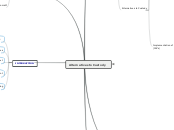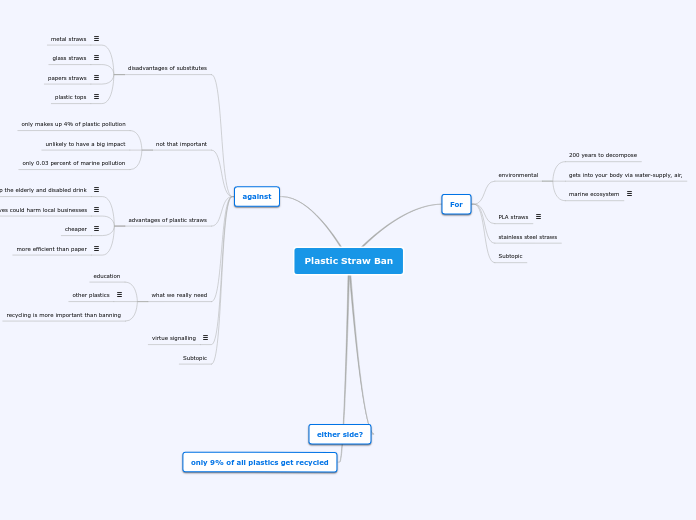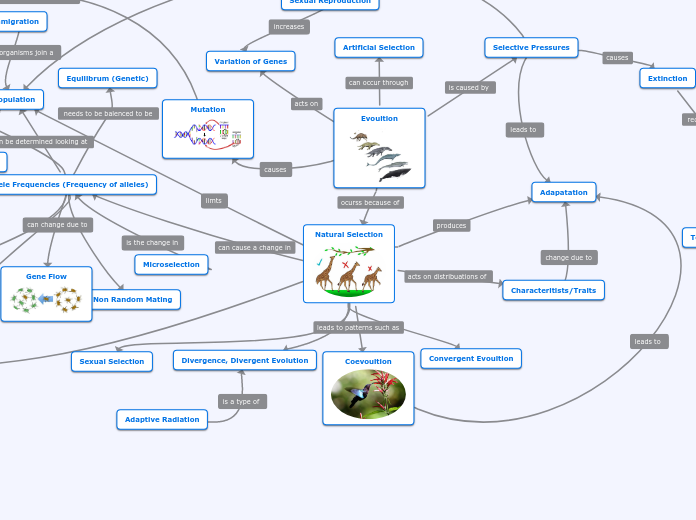Alternatives to Custody
The map relates to Section B, Question 4 on the exam and covers a number of central concerns relating to societies over reliance on prison as an effective method of punishment, and as an effective method of social control. These are:
- The issue of prison excess both historically and contemporarily
- Identify the trend in the rising prison population.
- Explore the implementation of ‘Alternatives to Custody’.
- Critically analyse the use of ‘Intensive Alternatives to Custody’ (IAC's)
CONCLUSION
Main points of evaluation
Main points of analysis
Objective
Aim
Recap
INTRODUCTION
Reasoning
What was the reasoning behind these choices?
Content
What/Which research, studies, philosophies, theories, evidence have you analysed, evaluated, explored, discussed in an attempt to answer the question.
Context
In what context does the question relate to?
Objectives
How might you answer the question?
Aims:
What is the question asking?
DESCRIPTION
How and Why to Punish?
These are just a few of the many questions surrounding the social institution that is punishment
Defining Features of Punishment
Condemnation and censure
Expressive Function Of Punishment
What message are we trying to send on a specific/general level when we seek to pnuish
Definition of Punishment
Provide an official/unofficial definition
CRITICAL EVALUATION
Result of Reforms?
Findings from the Manchester and Salford IAC pilot demonstrated that the introduction of community-based penalties as alternatives to imprisonment was a significant challenge.
In particular, the requirement to satisfy judicial and public concerns around confidence and enforcement represented specific issues.
These challenges could certainly be overcome with further investment in extolling the positives of alternatives to custody and countering the view that they are soft options
To improve performance and CJ effectiveness
To reduce CJ costs
To improve public confidence in the CJS
'Alternatives to Custody' Myths
Myth:
Sentences introduced as explicit alternatives to custody have successfully acted as like for like replacements of prison sentences.
The 1991 and 2003 Criminal Justice Acts have been the most far reaching community sentence reform acts. Years on from their implementation, the courts handed down suspended sentence orders for 10% of all indictable offences. This is far outstrips the Home Offices predictions (in Mair et al, 2007).
Assessing the impact of these reforms on the courts use of custody is impossible. There are no available statistics that can distinguish the community based sanctions given by Sentencers as opposed to custody; and the community sentences given to people who would not have received custody anyway.
Court's proportional use of custody for indictable offences is precisely unchanged from that which it was before the community sentence reforms were introduced in 2004 (Prison Reform Trust, 2014).
Myth:
Community sentence reform offers an effective solution to the record high prison population
The nature of short term custody is such that whilst it accounts for the majority of receptions into prison, sentences of less than 12 months constitute less than 10% of the 84,000+ in prison.
To achieve a reduction in the overall prison population by cutting short term custody would require a disproportionate change to occure
They would have to replace 40 per cent of all custodial sentences of less than 12 months to achieve the MOJ's intended 3,000 reduction in the overall prison population by 2015 (Herbert, 2010).
Reason for Prison Excess?
In major penal reform initiatives and reports over the last decade, the answer typically encountered as to why the prison population has increased is that there is more emphasis on punitive sentencing.
This is variously attributed to a combination of:-
Political rhetoric talking up crime problems and prison as a solution
Lack of confidence in the use of alternatives to imprisonment
Sensational media stoking up public emotions about and punitive responses to restore order
More punitive public attitudes
CRITICAL ANALYSIS
Implementation of Intensive Alternatives to Custody (IAC's)
A concern voiced by sentencers was that the public view orders such as the IAC as ‘soft options’. The ‘climate of opinion’ (Millie et al., 2003: 378) is increasingly influential in sentencing.
and the reassurance that the order fulfils the requisite 'penal punch’ to avoid accusations of ‘soft options’.
the dissemination of timely and relevant information to sentencers,
It is argued that the crucial element for effective implementation lies in the gatekeeping provided by PSR authors (probation staff),
Taylor, Clarke and McArt (2014) found the following issues with the use of IAC's in sentencing:
Reassurance
Importance of the PSR to provide reassurance to sentencers: PSR lack tailoring- Specific attributes of the IAC were not thoroughly articulated, with the features not being consistently communicated to sentencers.
The appropriateness of the IAC needs to be fully articulated and thereby increase confidence and efficacy. Proposals made in PSR need to be appropriate, targeted, tailored.
Confidence
Whether IAC’s represent a sufficient punitive substitute for custody: Disagreement as to whether the IAC represents an ‘alternative to custody’ or an ‘alternative to alternatives’. Furthermore, the expression of ‘custody threshold’- the IAC is difficult to locate on a scale of severity as comprised of a mix of sanctions.
Whether IAC’s instil confidence in terms of Enforcement and Breach: lack of clarity in terms of what constitutes a breach and what action is taken against non-compliance. SSO’s are perceived as more punitive compared to IAC. The treatment of IAC as a type of SSO is an attempt to manufacture the same level of assurance. There is a danger of inappropriate use (IAC used as ‘SSO with conditions’).
Whether IAC’s instil confidence in terms of Punishment and Rehabilitation: Sentencers and probation staff resigned to the public perceiving the IAC as a soft option
Cognitive
Awareness and understanding of the IAC: (to address misconceptions by the court that it is just another fad and therefore a reluctance to engage with the new sentences as they are viewed as a passing trend).
Further funding was given to run Intensive Alternatives to Custody (IAC) pilots.11 pilots ran from 2008/2009 – 2010/2011.
Built on the already established CO’s and SSO’s in 2005.
Were designed to be more robust, demanding and credible alternatives to short custodial sentences.
Sentencers’ could use existing Community Sentencing options by combining supervision with a mix of requirements and interventions.
2008 – MOJ invest £40m into NOMS to facilitate the promotion of Community Orders (CO’s) as opposed to short custodial sentences.
Popularity?
Clearly there is an ongoing drive towards reducing short custodial sentences and replacing them with alternatives to custody such as the IAC.
The design of effective interventions is critical. Finding the right balance of punishment and rehabilitation, restriction and opportunity to change, is only one aspect of creating a successful alternative
The term gained prominence in the growing decarceration movement (see McMahon, 1992).
Three positions about changing criminal justice where alternatives to custody has been used by those seeking to:-
Decarceration by emphasising that community based interventions can reduce the use of custody
Divert those on short term sentences from custody altogether
Extend the principle of prison to community sentences in terms of how punitive and onerous they are
the criminal careers of prolific offenders is an important focus in any discussion about the availability of suitable alternatives to custody.
Breaking out of the cycle of crime can be immensely difficult. Many are given short term sentences and prior to the Offender Rehabilitation Act, 2014, were not afforded access to rehabilitative treatment.
Why doesn't the government address the unnecessary resort to short term sentences, instead of introducing the potentially costly community supervision of those given short term prison sentences as people coming out of prison often need help and support to.....
Access health services
Find a job
Secure Benefits
Find Accomodation
Cost of Imprisonment
Imprisonment is an expensive practice the cost of which can be easily quantified. Alongside this sits a complex mix of further interdependent costs to which it is much harder to attribute a monetary value.
The cost to society as a whole.
The cost to those who work in an increasingly pressured prison system
The costs faced by their families, dependants and friends.
The human costs faced by those imprisoned during their sentence and post release.
Prison Population
Despite the curtailment of custody in both the 1991 and 2003 Criminal Justice Acts, and the strategy emphasising punishment in the community which entailed the creation of more alternatives to imprisonment, the over reliance on prison has continued.
An increase of over 30% compared to a decade ago, and a prison population nearly double that of 20 years ago, when in 1994, the average prison population stood at 48,621 (Bromley Briefing, 2014:8).
Despite a slight decrease compared with 2011 projected figures (MOJ, 2011), some have argued that this over reliance on prison as the pillar of social control, has lead to a search for 'alternatives to custody'.
Prison Crisis
The issue of growing prison numbers has been considered a penal crisis since the 1960's. The main response of successive governments up until 1980's was known as a 'strategy of encouragement', providing a wider range of non-custodial penalties, such as community service and the suspended sentence.
During which time, the government relied on exhortation rather than legislative control in an attempt to encourage the courts to use these 'alternatives to imprisonment' but with only temporary and limited effect.
The prison population continued to rise and as a result, the 1990 White Paper famously stated that imprisonment 'can be an expensive way of making bad people worse' (Home Office, 1990:2).









